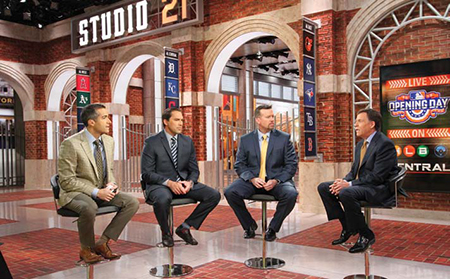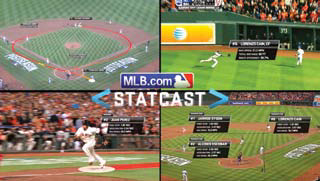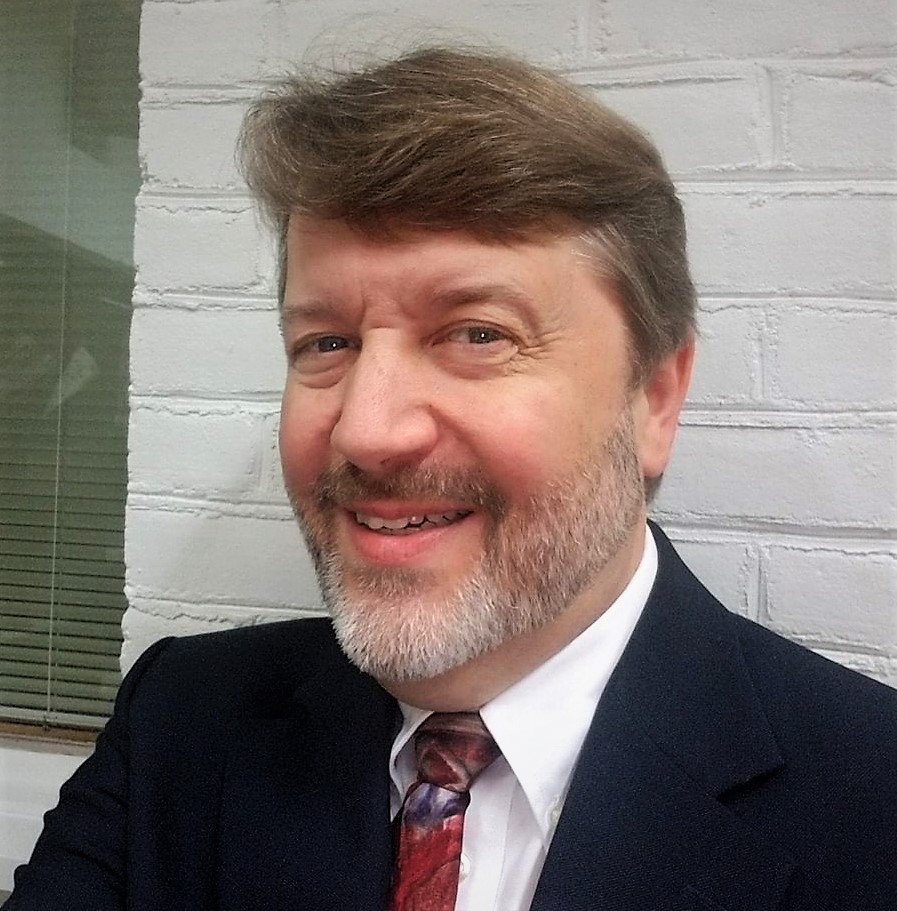Inside MLB’s Studio 21
SECAUCUS, N.J.—Late talk show host Tom Snyder used to like to segue into commercial breaks during NBC’s “Tomorrow” program by asking his audience to “Fire up a Colortini, sit back, relax, and watch the pictures as they fly through the air.”
It’s doubtful that Snyder’s quote was the inspiration for the ensemble at MLB Network that created the new Studio 21—so named for legendary Pittsburgh Pirate Hall of Famer Roberto Clemente—but they certainly ride that train of thought.
“We designed it to make the most dynamic studio for all baseball fans,” said Susan Stone, senior vice president of engineering and operations. “It was designed to appeal across MLB’s diverse fan base.”

Though the cablenet had to operate on a tight construction schedule to make it happen, MLB Network unveiled its new Studio 21 in time for Opening Day. Discussing the day’s hot topics and ball scores are, from left, Matt Vasgersian, Mark DeRosa, Sean Casey and Bob Costas. Studio 21 represents an ambitious endeavor, notable for its 1,400 square feet of LED displays with diverse video options via the Orad TD Control system, including the studio’s premiere feature—14 back-to-back 55-inch Barco monitors suspended from the ceiling that can be rotated, raised and lowered in synchronized timing—within a welcoming 1,800-square-foot courtyard that acknowledges baseball’s old school parks.
The project was completed in less than three months, just in time for the first shout of “Play ball!” on Opening Day, as well as the first broadcast of MLB Network’s new signature morning show, “MLB Central,” on April 6.
THE SKINNY
Part of what facilitated the expansion at MLB Network was its location, in a somewhat trafficked area in Secaucus, N.J. (about two miles from MetLife Stadium), that had a 40,000-square-foot vacancy due to the exit of the Bokara Rug Co.
“The only thing left there might have been about three walls. We didn’t start on the studio until Jan. 12, so our guys did a great job handling all that work during a snowy winter,” said Stone, noting that 11,000 feet (2.08 miles) of power cable and 12,500 feet (2.3 miles) of data cable run throughout the facility.
Get the TV Tech Newsletter
The professional video industry's #1 source for news, trends and product and tech information. Sign up below.
The first point of business to acknowledge, given the new studio’s surroundings, was the noise factor. An acoustical floating floor was required, “since [the studio is located] near a UPS depot,” Stone said of the building, which houses Studio 21, an 8,000-square-foot section, plus office space and a conference room, with a multi-purpose room also part of the plan; the adjacent old facility, which is home to Studio 3, Studio 42 and Studio K.
As for lighting, Studio 21 has layered 2mm LEDs tiles that cover about 1,400 square feet of the space, with ETC ColorSource PARs. Then the seven “flying” double-sided Barco boards, (which are comprised of the 14 monitors mentioned above) that are sized to look like pennants drop from the rafters.
“That gives us great flexibility,” said Mark Haden, vice president of engineering and IT, noting video loops, lists of league leaders and sponsorship obligations that may loom large among the images shown during a given broadcast. “It can actually extend the set, so we can feature exteriors of ballparks, shots of the Hall of Fame, Roberto Clemente highlights, feeds from the Ballpark Cam and interviews.”
NOTHING’S STATIC
Studio 21 was built in response to the increasing demand for programming on MLB Network and houses “Quick Pitch,” which airs at 1 a.m., then “wheels” (repeats) overnight; “MLB Now,” a SABR-metric show that airs at 4 p.m. on weekdays (4:30 p.m. on Thursdays); as well as “MLB Central,” which airs daily from 10 a.m. to 1 p.m.
The camera setup is a mix of three Sony HDC-2400s and two HDC-P1s on Jimmy-Jibs and a Steadicam with a mix of lenses. The plan also includes the repurposing of a square camera “as kind of a floater.”
As for the videoboards, “Because the LED walls are irregularly shaped, we are using pixel remapping tools from Orad,” said Haden, with the content being fed at 4K resolution from the Orad HDVG4 render engine, “as they break the walls into quadrants and break down the content from creative services.”
The whole point about the look of MLB Central is to garner the viewer’s attention, not only with information, but with imagery and light, too. “There will not be anything static about that LED wall, because that movement makes the presentation more dynamic,” Haden said. “We are still exploring all of our possibilities. But the key is that the Orads have the horsepower to handle all of the changes and movement that we want.”
Statcast: A Revelation and More for Baseball Fans
When hardcore baseball fans watch a game, they want details. They want to know the perceived velocity (76.8 MPH) of a fastball thrown by Washington Nationals pitcher Gio Gonzalez, or exactly how much mustard a throw from deep in the hole by his teammate, shortstop Ian Desmond, had on it as it zipped (at 63.6 MPH) across the infield to Nats first baseman Ryan Zimmerman.

Seamheads can rejoice then, because on April 21, Statcast made its TV debut during MLB Network’s Showcase game between the Nationals and the St. Louis Cardinals. The state-of-the-art tracking technology gathers, displays and reads into previously hard-to-imagine data via a series of highresolution optical cameras installed around (all 30) ballparks and radar equipment set up behind home plate.
Statcast, first used on the Internet in 2014, precisely tracks the location and movements of the ball and the players. It can also measure the velocity, launch angle and vector of the ball as it comes off the bat, the top speed of a basestealer, how high an outfielder jumps when making a circus catch… the list goes on.
Mark R. Smith
‘UNUSUALLY FLEXIBLE’
Another part of the Orad engine stores the content, which is, of course, crucial in the case of a network with a new studio that has decades of content to store, with DVRs serving as the ultimate landing space for newly-created set content.
MLB Network used a large multichanneled EVS to store highlights or content that may be needed on quick turnaround. “For even faster turnaround, we used GVG Aurora and Adobe Premiere, which is also being used with Final Cut Pro at the moment,” said Haden, adding that an eventual total switch to Abode Premiere is forthcoming.
Brian Higgason, vice president of design for broadcast at New York City-based Clickspring Design, designed Studio 21, as well as Studio K, Studio 3 and Studio 42. He spoke of the importance of the space’s flexibility, given that Studio 21 hosts the three shows, as well as for what lies ahead.
“That was the big thing from a technical standpoint,” said Higgason. “It’s also remarkable in that half the building is still a construction site.”
He also noted the importance of the Barco monitors that are automated “and act as a unit that we can use in any combination, flying in and rotating as needed,” while pointing out the boost provided by RGBA LED scenic lighting.
All told, Studio 21 is “an unusually flexible space and that’s what every broadcaster wants, from the smallest affiliate on up,” Higgason said.
Stone agreed. “When we first saw Clickspring’s design about a year ago, we were very excited because it was so fresh and original,” she said. “We loved the idea of a central welcoming location and, in reality, what we have has far exceeded what I saw in the renderings.”
“When you walk in, the courtyard combines elements of your traditional ballpark,” she said, “but you see the classic, and modern, home of our new technology.”
Mark R. Smith has covered the media industry for a variety of industry publications, with his articles for TV Technology often focusing on sports. He’s written numerous stories about all of the major U.S. sports leagues.
Based in the Baltimore-Washington area, the byline of Smith, who has also served as the long-time editor-in-chief for The Business Monthly, Columbia, Md., initially appeared in TV Technology and in another Futurenet publication, Mix, in the late ’90s. His work has also appeared in numerous other publications.

